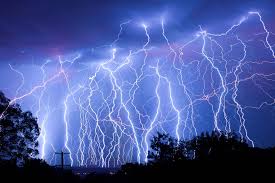Stamp: Launch Site of "M-100" Meteorological Station (Soviet Union, USSR 1984)
Launch Site of "M-100" Meteorological Station (Soviet Union, USSR 1984)
03 April (Soviet Union, USSR ) within release Interkosmos - Soviet-Indian Space Flight goes into circulation Stamp Launch Site of "M-100" Meteorological Station face value 5 Russian kopek
| Stamp Launch Site of "M-100" Meteorological Station in catalogues | |
|---|---|
| Colnect codes: | Col: SU 1984.04.03-01a |
Stamp is vertical format.
Plate error: Jagged line across first letter "И" in ИНДИЯ.Also in the issue Interkosmos - Soviet-Indian Space Flight:
- Stamp - "Interkosmos" Rocket, Satellites & Dish Aerial face value 45;
- Stamp - Launch Site of "M-100" Meteorological Station face value 5;
Stamp Launch Site of "M-100" Meteorological Station it reflects the thematic directions:
A flag is a piece of fabric (most often rectangular or quadrilateral) with a distinctive design that is used as a symbol, as a signaling device, or as decoration. The term flag is also used to refer to the graphic design employed, and flags have since evolved into a general tool for rudimentary signalling and identification, especially in environments where communication is similarly challenging (such as the maritime environment where semaphore is used). National flags are patriotic symbols with varied wide-ranging interpretations, often including strong military associations due to their original and ongoing military uses. Flags are also used in messaging, advertising, or for other decorative purposes. The study of flags is known as vexillology, from the Latin word vexillum, meaning flag or banner.
Meteorology is a branch of the atmospheric sciences (which include atmospheric chemistry and physics) with a major focus on weather forecasting. The study of meteorology dates back millennia, though significant progress in meteorology did not begin until the 18th century. The 19th century saw modest progress in the field after weather observation networks were formed across broad regions. Prior attempts at prediction of weather depended on historical data. It was not until after the elucidation of the laws of physics, and more particularly in the latter half of the 20th century, the development of the computer (allowing for the automated solution of a great many modelling equations) that significant breakthroughs in weather forecasting were achieved. An important branch of weather forecasting is marine weather forecasting as it relates to maritime and coastal safety, in which weather effects also include atmospheric interactions with large bodies of water.
Outer space (or simply space) is the expanse that exists beyond Earth's atmosphere and between celestial bodies. It contains ultra-low levels of particle densities, constituting a near-perfect vacuum of predominantly hydrogen and helium plasma, permeated by electromagnetic radiation, cosmic rays, neutrinos, magnetic fields and dust. The baseline temperature of outer space, as set by the background radiation from the Big Bang, is 2.7 kelvins (−270 °C; −455 °F)
A spacecraft is a vehicle that is designed to fly and operate in outer space. Spacecraft are used for a variety of purposes, including communications, Earth observation, meteorology, navigation, space colonization, planetary exploration, and transportation of humans and cargo. All spacecraft except single-stage-to-orbit vehicles cannot get into space on their own, and require a launch vehicle (carrier rocket).




